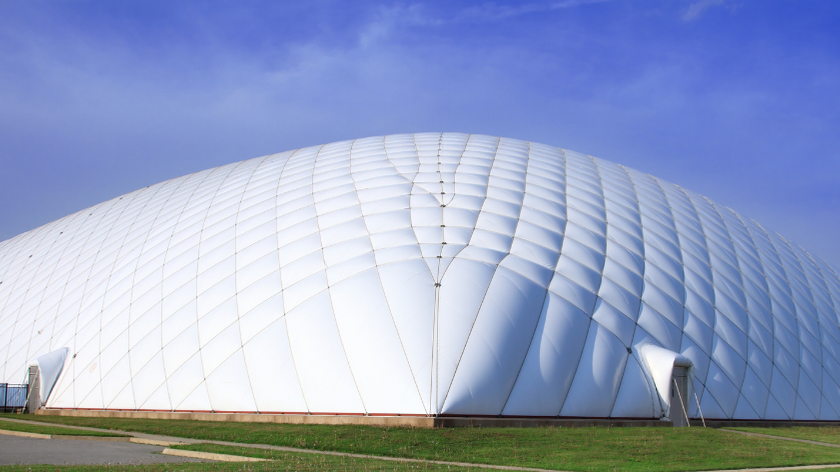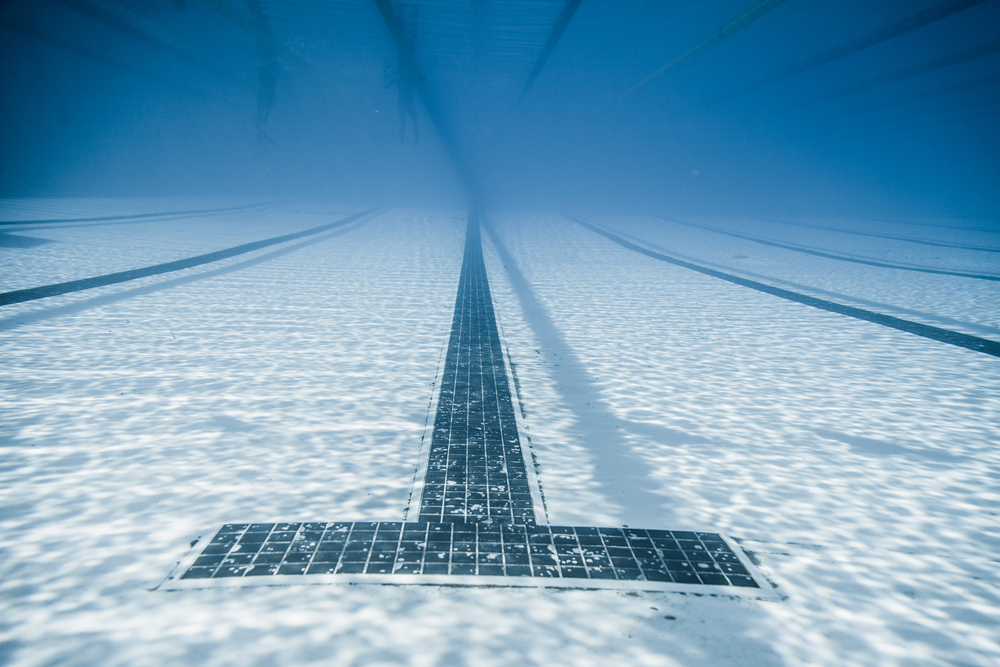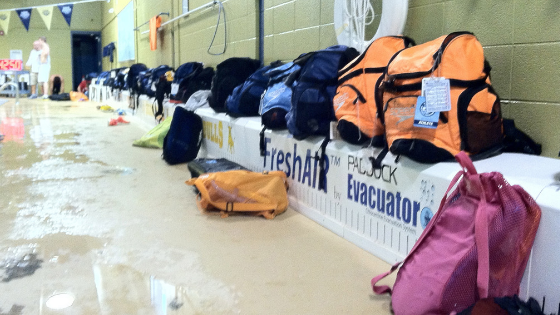Addendum to "Indoor Air Quality vs. Water Quality"
This article is a republishing of a guest blog written by Eric Knight for the NSPF in 2017, found here.
Perfect water quality cannot ensure good air quality
The previous post Indoor Air Quality vs. Water Quality: Indoor moisture and how to combat it did a good job covering the basics of indoor air quality in pools. This addendum expands upon that article and introduce more facts about the Indoor Air Quality (IAQ) problem in natatoriums.
For some reason, there is a myth being pushed in the pool industry; a myth that suggests all air quality problems can be stopped by addressing water quality. This idea is widely believed and is even promoted by influential organizations such as USA Swimming1:
“Water Quality has to be correct. 99% of the problems that are tagged as air quality are caused by chloramines or other contaminants in the water. Until this problem is solved, the problem will remain. Treating the air first is like trying to treat the smoke before putting out the fire.”
Sure, water quality and indoor air quality are related. But USA Swimming's statement blames air quality problems on water chemistry, when there is far more to the equation beyond water chemistry. Air physics are involved too. To adequately solve the IAQ problem, a broader understanding of indoor pools is needed, as well as a willingness to think differently. Clearly, indoor pool designs for the past several decades have not worked well enough.
Fact: Even with excellent water quality, air quality can still be a problem. There are plenty of bad indoor air quality cases where pools have state-of-the-art filtration, UV, and are under excellent management. It is not always a reflection on the operator and equipment; air quality is far more difficult to control–and test and measure–than water chemistry.
Why do so many experts focus their minds on water chemistry at the expense of all other factors? To refer back to USA Swimming’s statement, that's like putting out the fire and believing there will be no smoke in the process.
Anyone who has blown out a candle knows that doesn’t make sense. The smoke is inevitable, and therefore must be addressed. Bad air quality is not water chemistry’s burden to solve on its own. There are issues water chemistry simply cannot address.
Air quality problems can be solved, but only when addressed from both sides of the issue
The moment disinfectant byproducts (DBPs) off-gas into the air is the transition from water to air quality. After the moment of off-gassing, water chemistry is irrelevant to the airborne contaminants; all that matters now is the air system and the airflow it provides.
 Fact: Most indoor pool air systems are inadequately designed. That’s not to say they are “wrong”, because the air systems and designs [should] meet ASHRAE 62.1 standards. Issues arise because there are many ways to interpret the ASHRAE code, and while 62.1 makes firm recommendations for indoor pools, the section is only four (4) pages long in the design handbook. Compare that to multiple chapters for other applications, and you will realize that engineers designing pools have very little guidance to follow.
Fact: Most indoor pool air systems are inadequately designed. That’s not to say they are “wrong”, because the air systems and designs [should] meet ASHRAE 62.1 standards. Issues arise because there are many ways to interpret the ASHRAE code, and while 62.1 makes firm recommendations for indoor pools, the section is only four (4) pages long in the design handbook. Compare that to multiple chapters for other applications, and you will realize that engineers designing pools have very little guidance to follow.
In reality, many of these mechanical engineers wisely seek help from pool dehumidification experts and pool consultants. And yet, until some recent breakthrough technology changed what pool air systems are capable of, problems would still often arise.
Fact: There is a difference between “return” and “exhaust”. Returns draw air into the Pool Dehumidification Unit (PDU), which exhausts a portion (usually 10-20%) and conditions the rest of the air to be resupplied into the natatorium. Low returns in pools have been prevalent, but they usually do more harm than good. By placing air intakes low to the ground, airborne DBPs like chloramines get recirculated throughout the entire natatorium…corroding everything along the way. This is why PDUs lose coils, compressors, fans (among other components) to rust and corrosion. Ask any pool owner who has had to replace these parts…they are not cheap.

Exhausts are not returns. This can get confusing—mostly because of semantics—so this is an important distinction to make. In most applications, "returns" and "exhausts" are synonymous because the exhaust fan is within the return path. But this should not be the case in a pool system. It is essential to keep the exhaust separate from the PDU. Recirculation of chloramines is a sure-fire way to compound an air quality problem, and damage the equipment in the natatorium—and indeed, the facility itself.
Fact: PDU systems cannot distinguish between good air and polluted air; source-capture exhausts, however, make it possible. We hear so much about the amount of outside air introduced, or the turnover rate, or the [insert confusing industry buzzword here]. If you really want good natatorium air quality, a traditionally designed air system will not deliver it. The duct layout, PDU, return location, air volumes and style and location of exhausts all matter. A lot. Beware of any "expert" who thinks otherwise. If the experts truly had a grasp on this problem, there would no longer be a problem...and natatorium IAQ problems are an epidemic.
Fact: Exhausts and Returns are only as effective as the design of the supply duct allows them to be. Air flow in a natatorium is almost completely controlled by the supply side of the air system, so it is very important to have it designed right. Getting air to the breathing zone (but not directly aimed at the water) is critical. Once it’s there…make sure it moves somewhere you want it to go—ideally a source-capture exhaust system like the Paddock Evacuator®.
Fact: Opening outside doors during the winter can make air quality worse. Since the natatorium should be negatively pressured, the cold air is sucked into the room, but allows for the vapor pressure to escape. A sudden change in vapor pressure means easier and faster evaporation, which can mean more rapid off-gassing of airborne chloramines. This impacts the relative humidity of the room and disrupts the entire environment. Not to mention the tremendous stress on the PDU, which was designed for a certain amount of moisture removal. When cold outside air is introduced, it can overwhelm a dehumidifier, with costly consequences.

Water quality can improve—but not prevent—air quality problems
On the other side of the equation is chemistry…but as stated before, great water quality alone will not prevent bad air quality. You can clean your shower every day, but that won’t stop DBP’s from off-gassing every time you spray it with household cleaner. The key is consistency; consistent management of chemistry, good sanitization to maintain a high ORP, balanced LSI and pool cleaning practices. With heavily loaded pools, the introduction of organic waste is a given, so that organic waste must be managed.
Fact: Chlorine does not distinguish between non-living organic waste and living bacteria/diseases; it just oxidizes and sanitizes whatever it can. When chlorine gets used up (reduced), however, partially oxidized organics often become DBPs. This is why it is so important to help chorine by breaking down organic waste beforehand. That way, chlorine doesn’t get used up as fast, ORP stays high, and it’s able to disinfect living organisms faster. Some proven ways to help chlorine address organics are enzymes, ozone and UV. Enzymes can be combined with either ozone or UV as well.
Three Cornerstones of Water Quality
Circulation, filtration and sanitization. They are the three pivotal aspects of water quality, and each of them need to be on point. Breaking down organics, for example, can reduce chloramine byproducts in the water and air, but without good circulation, only part of the pool will benefit. Without adequate free chlorine levels, sanitization will fall behind. If the water chemistry is consistently balanced properly and organics are addressed, less DBPs should off-gas, which means an improvement to air quality.
Let the air system with source-capture exhaust handle it from there.
1It appears that the cited USA Swimming article (from which the above quote came from) has since been removed from the internet. The hyperlink no longer works, nor was the article found through multiple search engine attempts.

 By
By



